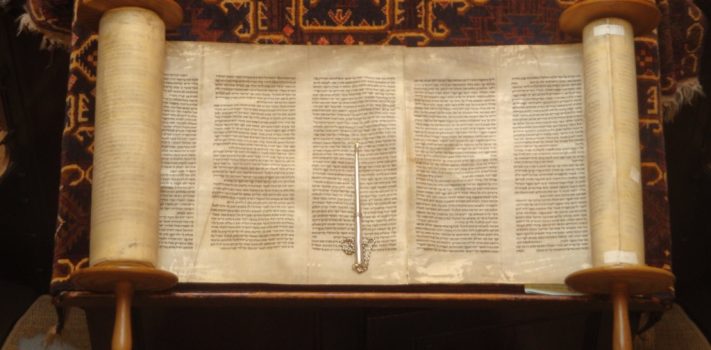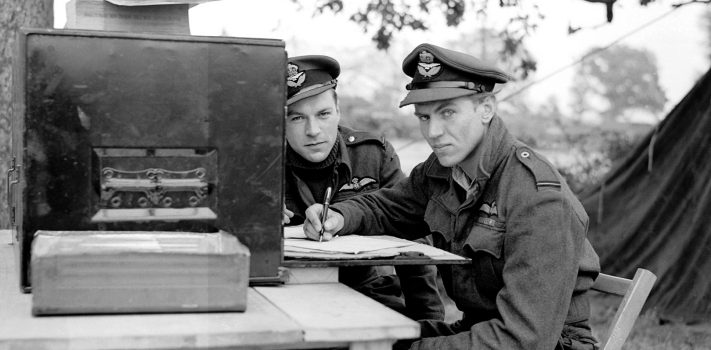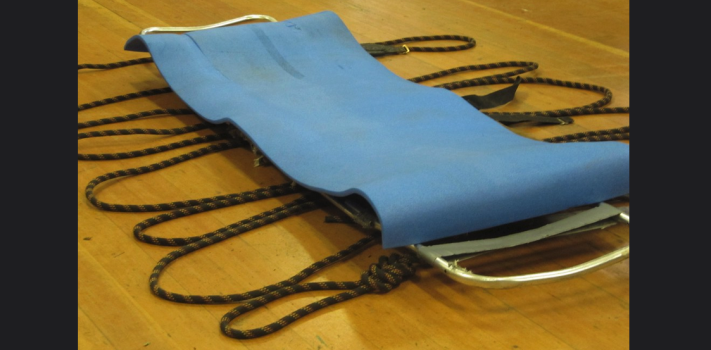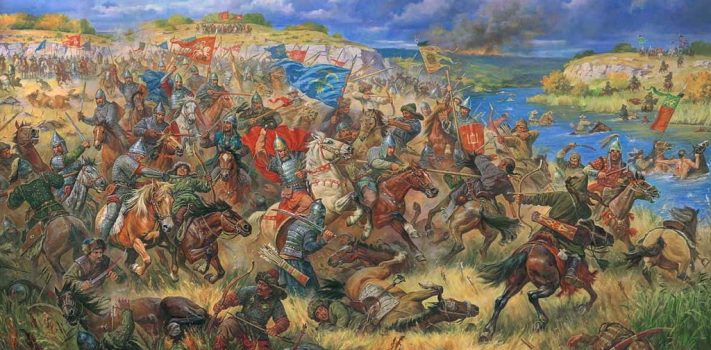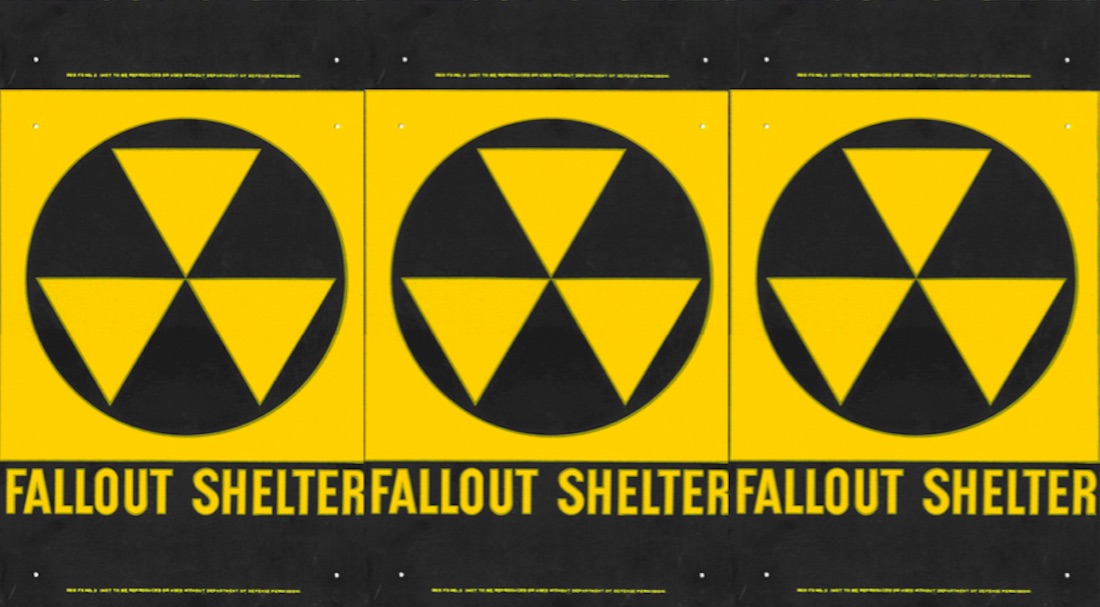- Ad Civil Defense ManualClick Here --> The Civil Defense Manual... The A to Z of survival. Looks what's in it... https://civildefensemanual.com/whats-in-the-civil-defense-manual/
- Ad Ready Made Resources, Trijicon Hunter Mk2$2000 off MSRP, Brand New in the case
Preparedness Notes for Friday — December 6, 2024
Today is the birthday of RAF and RCAF fighter ace George Frederick “Buzz” Beurling. (Pictured, at right.) He was born in Verdon, Quebec on December 6, 1921, and died in Rome, Italy, May 20, 1948. There are a few books about him and one worth mentioning is his autobiography Malta Spitfire which he wrote in 1943 during a Victory Bond tour in Canada. He left the RCAF in about April 1944 with 31 kills, most of them during the siege of Malta in the summer of 1942.
—
Today is also the birthday of “claymation” artist and filmmaker Nick Park (born, 1958.) He is best known for his Wallace & Gromit films.
—
On December 6th, 1865, the 13th Amendment to the U.S. Constitution was ratified, ending the institution of slavery. “Neither slavery nor involuntary servitude, except as a punishment for crime whereof the party shall have been duly convicted, shall exist within the United States, or any place subject to their jurisdiction.” With these words, the single greatest change wrought by the Civil War was officially noted in the Constitution.
—
SurvivalBlog Writing Contest
Today we present another entry for Round 116 of the SurvivalBlog non-fiction writing contest. The prizes for this round include:
First Prize:
- The photovoltaic power specialists at Quantum Harvest LLC are providing a store-wide 10% off coupon. Depending on the model chosen, this could be worth more than $2000.
- A Gunsite Academy Three Day Course Certificate. This can be used for any of their one, two, or three-day course (a $1,095 value),
- A Peak Refuel “Wasatch Pack” variety of 60 servings of premium freeze-dried breakfasts and dinners in individual meal pouches — a whopping 21,970 calories, all made and packaged in the USA — courtesy of Ready Made Resources (a $350 value),
- American Gunsmithing Institute (AGI) is providing a $300 certificate good towards any of their DVD training courses. Their course catalog now includes their latest Survival Gunsmithing course.
- HSM Ammunition in Montana is providing a $250 gift certificate. The certificate can be used for any of their products.
Second Prize:
- A SIRT STIC AR-15/M4 Laser Training Package, courtesy of Next Level Training, that has a combined retail value of $679
- Two 1,000-foot spools of full mil-spec U.S.-made 750 paracord (in-stock colors only) from www.TOUGHGRID.com (a $240 value).
- A Laptop EMP Shield and a Smartphone Faraday Bag (a combined value of $200), courtesy of MobileSecSolutions.com.
- Two sets of The Civil Defense Manual, (in two volumes) — a $193 value — kindly donated by the author, Jack Lawson.
- A transferable $150 FRN purchase credit from Elk Creek Company, toward the purchase of any pre-1899 antique gun. There is no paperwork required for delivery of pre-1899 guns into most states, making them the last bastion of gun purchasing privacy!
Third Prize:
- A Berkey Light water filter, courtesy of USA Berkey Filters (a $305 value),
- Three sets each of made-in-USA regular and wide-mouth reusable canning lids. (This is a total of 300 lids and 600 gaskets.) This prize is courtesy of Harvest Guard (a $270 value)
- A $200 credit from Military Surplus LLC that can be applied to purchase and/or shipping costs for any of their in-stock merchandise, including full mil-spec ammo cans, Rothco clothing and field gear, backpacks, optics, compact solar panels, first aid kits, and more.
- A transferable $150 FRN purchase credit from Elk Creek Company, toward the purchase of any pre-1899 antique gun.
—
More than $935,000 worth of prizes have been awarded since we started running this contest. In 2023, we polled blog readers, asking for suggested article topics. Please refer to that poll if you haven’t yet chosen an article topic. Round 116 ends on January 31st, so get busy writing and e-mail us your entry. Remember that there is a 1,500-word minimum, and that articles on practical “how-to” skills for survival have an advantage in the judging.
- Ad Don't wait - get the ultimate US-made ultra-high performance US-made SIEGE Stoves and stunning hand-crafted SIEGE belts for Christmas. For stocking-stuffers see our amazing fire-starters. Gifts that can save lives. Big Sale!Every bespoke SIEGE buckle goes through an hours-long artisanal process resulting in a belt unlike anything else, with blazing fast performance and looks and comfort to match.
- Ad Click Here --> Civil Defense ManualNOW BACK IN STOCK How to protect, you, your family, friends and neighborhood in coming times of civil unrest… and much more!
Improvised Casualty Retrieval and Transport – Part 4, by R.D.J.
(Continued from Part 3. This concludes the article.)
HOW TO CARRY A STRETCHER OVER BROKEN GROUND OR RUBBLE, OR UP / DOWN STAIRS, LADDERS, SLOPES
– If you have enough people, assemble a minimum of six stretcher bearers and a team leader for even the shortest move- in dark and confined spaces use at least one person to light and / or guide the way
– avoid hurry
– wear safety helmets and work gloves and protective ‘work’ boots
– drape the patient with a heavy blanket if moving / waiting in cold weather and exposed places but leave eyes / face exposed so patient can breathe
– at all times when stretcher is not level keep patient’s head above the level of his feet unless instructed otherwise by a medical / nursing professional
WHEN A STRETCHER IS NOT AVAILABLE OR CANNOT BE USED
Note that these next carry methods are NOT recommended when the patient has not (yet) been checked and cleared by medical staff as free from any injury or condition which careless handling could make worse, such as a spinal injury. However, in the event of a fire or similar emergency when to save the patient’s and your life you must evacuate the patient immediately from where you find him, these techniques may be appropriate.Continue reading“Improvised Casualty Retrieval and Transport – Part 4, by R.D.J.”
- Ad California Legal Rifles & Pistols!WBT makes all popular rifles compliant for your restrictive state. Choose from a wide range of top brands made compliant for your state.
- Ad Trekker Water Station 1Gal Per MinuteCall us if you have Questions 800-627-3809
Economics & Investing For Preppers
Here are the latest news items and commentary on current economics news, market trends, stocks, investing opportunities, and the precious metals markets. In this column, JWR also covers hedges, derivatives, and various obscura. This column emphasizes JWR’s “tangibles heavy” investing strategy and contrarian perspective. Today, another sobering look at the National Debt. (See the National Debt and Deficit section.) Oh, before you jump to the conclusion that I picked an “old” photo of the National Debt Clock… It is only about four years old. That is how rapidly the National Debt has blossomed.
Precious Metals:
Largest gold deposit in the world worth $83 billion found in China.
o o o
Gold-Backed Or Bust: Judy Shelton’s Plan To Tame The Fed And Restore The Dollar.
o o o
Florida Authorities Recover 37 Gold Coins Stolen From 1715 Fleet Shipwrecks.
Economy & Finance:
US consumer price increases accelerated last month with inflation pressures resilient.
o o o
California Private Sector Employment Has Collapsed.
o o o
Reader E.S. sent this: 2025 Could Be Horrendous for Car Sales. It’s a Huge Test for EVs.
- Ad Survival RealtyFind your secure and sustainable home. The leading marketplace for rural, remote, and off-grid properties worldwide. Affordable ads. No commissions are charged!
- Ad USA Berkey Water Filters - Start Drinking Purified Water Today!#1 Trusted Gravity Water Purification System! Start Drinking Purified Water now with a Berkey water filtration system. Find systems, replacement filters, parts and more here.
The Editors’ Quote of the Day:
“Our nation was founded on the basic idea that the people we elect run the government. That isn’t how America functions today. Most legal edicts aren’t laws enacted by Congress but “rules and regulations” promulgated by unelected bureaucrats—tens of thousands of them each year. Most government enforcement decisions and discretionary expenditures aren’t made by the democratically elected president or even his political appointees but by millions of unelected, unappointed civil servants within government agencies who view themselves as immune from firing thanks to civil-service protections
This is antidemocratic and antithetical to the Founders’ vision. It imposes massive direct and indirect costs on taxpayers. Thankfully, we have a historic opportunity to solve the problem. On Nov. 5, voters decisively elected Donald Trump with a mandate for sweeping change, and they deserve to get it.
President Trump has asked the two of us to lead a newly formed Department of Government Efficiency, or DOGE, to cut the federal government down to size. The entrenched and ever-growing bureaucracy represents an existential threat to our republic, and politicians have abetted it for too long. That’s why we’re doing things differently. We are entrepreneurs, not politicians. We will serve as outside volunteers, not federal officials or employees. Unlike government commissions or advisory committees, we won’t just write reports or cut ribbons. We’ll cut costs.
We are assisting the Trump transition team to identify and hire a lean team of small-government crusaders, including some of the sharpest technical and legal minds in America. This team will work in the new administration closely with the White House Office of Management and Budget. The two of us will advise DOGE at every step to pursue three major kinds of reform: regulatory rescissions, administrative reductions and cost savings. We will focus particularly on driving change through executive action based on existing legislation rather than by passing new laws.” – Elon Musk and Vivek Ramaswamy, from a Wall Street Journal editorial, describing their goals for the Department of Government Efficiency
- Ad STRATEGIC RELOCATION REALTYFOR SALE: Self-sustaining Rural Property situated meticulously in serene locales distant from densely populated sanctuary cities. Remember…HISTORY Favors the PREPARED!
- Ad LifeSaver 20K JerryCan Water PurifierThe best water jerrycan you can buy on the market! Mention Survivalblog for a Free Filter ($130 Value)
Preparedness Notes for Thursday — December 5, 2024
On December 5, 1408: The Golden Horde, led by Emir Edigu, reached Moscow.
—
December 5th,1456: An earthquake struck Naples, killing an estimated 35,000 people.
—
December 5, 1766: Christie’s held their first sale in their permanent saleroom in Pall Mall, London. The firm is now the world’s largest auction house.
—
On December 5th, 1964, the first Medal of Honor awarded to a serviceman for action in Vietnam was presented to Captain Roger Donlon, a Special Forces officer.
—
SurvivalBlog Writing Contest
Today we present another entry for Round 116 of the SurvivalBlog non-fiction writing contest. The prizes for this round include:
First Prize:
- The photovoltaic power specialists at Quantum Harvest LLC are providing a store-wide 10% off coupon. Depending on the model chosen, this could be worth more than $2000.
- A Gunsite Academy Three Day Course Certificate. This can be used for any of their one, two, or three-day course (a $1,095 value),
- A Peak Refuel “Wasatch Pack” variety of 60 servings of premium freeze-dried breakfasts and dinners in individual meal pouches — a whopping 21,970 calories, all made and packaged in the USA — courtesy of Ready Made Resources (a $350 value),
- American Gunsmithing Institute (AGI) is providing a $300 certificate good towards any of their DVD training courses. Their course catalog now includes their latest Survival Gunsmithing course.
- HSM Ammunition in Montana is providing a $250 gift certificate. The certificate can be used for any of their products.
Second Prize:
- A SIRT STIC AR-15/M4 Laser Training Package, courtesy of Next Level Training, that has a combined retail value of $679
- Two 1,000-foot spools of full mil-spec U.S.-made 750 paracord (in-stock colors only) from www.TOUGHGRID.com (a $240 value).
- A Laptop EMP Shield and a Smartphone Faraday Bag (a combined value of $200), courtesy of MobileSecSolutions.com.
- Two sets of The Civil Defense Manual, (in two volumes) — a $193 value — kindly donated by the author, Jack Lawson.
- A transferable $150 FRN purchase credit from Elk Creek Company, toward the purchase of any pre-1899 antique gun. There is no paperwork required for delivery of pre-1899 guns into most states, making them the last bastion of gun purchasing privacy!
Third Prize:
- A Berkey Light water filter, courtesy of USA Berkey Filters (a $305 value),
- Three sets each of made-in-USA regular and wide-mouth reusable canning lids. (This is a total of 300 lids and 600 gaskets.) This prize is courtesy of Harvest Guard (a $270 value)
- A $200 credit from Military Surplus LLC that can be applied to purchase and/or shipping costs for any of their in-stock merchandise, including full mil-spec ammo cans, Rothco clothing and field gear, backpacks, optics, compact solar panels, first aid kits, and more.
- A transferable $150 FRN purchase credit from Elk Creek Company, toward the purchase of any pre-1899 antique gun.
—
More than $935,000 worth of prizes have been awarded since we started running this contest. In 2023, we polled blog readers, asking for suggested article topics. Please refer to that poll if you haven’t yet chosen an article topic. Round 116 ends on January 31st, so get busy writing and e-mail us your entry. Remember that there is a 1,500-word minimum, and that articles on practical “how-to” skills for survival have an advantage in the judging.
- Ad USA Berkey Water Filters - Start Drinking Purified Water Today!#1 Trusted Gravity Water Purification System! Start Drinking Purified Water now with a Berkey water filtration system. Find systems, replacement filters, parts and more here.
- Add Your Link Here
Improvised Casualty Retrieval and Transport – Part 3, by R.D.J.
(Continued from Part 2.)
This log-rolling procedure maintains the patient’s entire body in neutral alignment, minimizing any untoward movement of the spine. (Procedure assumes any upper and lower extremity injuries are already immobilized). Then:
1. Prepare the spine board or stretcher with straps, placing the board next to the patient’s side. The straps are to be positioned for fastening later across the patient’s thorax (chest), just above the iliac crests (hip-bones), thighs, and just above the ankles. Straps or tape may be used to secure the patient’s head and neck to the long board.
2. If you have a cervical collar, apply it now how you have been taught to. If you don’t, you won’t.
3. Gently straighten the patient’s arms and place them (palm-in) next to the torso.
4. Carefully straighten the patient’s legs, placing them in neutral alignment with the patient’s spine. Gently, yet firmly, tie the patient’s ankles together with roll-type bandaging (or if you need to improvise, a scarf or belt will work).
5. Assistant 1 continues to maintain alignment of the patient’s head and neck, and monitors.
Assistant 2 reaches across the patient grasping the patient at the shoulder and wrist.
Assistant 3 reaches across the patient grasping the patient’s hip just distal to the wrist with one hand and with the other hand firmly grasps the roller bandage or tie that is securing the ankles together.
6. At the direction of Assistant 1, the patient is cautiously log-rolled as a unit toward the Assistant(s) at the patient’s side, but only to the minimal degree necessary to position the board under the patient.
a. Assistant 1 (at the patient’s head) closely observes the log-rolling process and maintains neutral alignment of the patient’s head and neck with the torso, avoiding any flexion or hyperextension of the patient’s neck.
b. Assistant 2 controls movement of the patient’s torso and maintains neutral alignment of the thoracolumbar (chest and back) spine.
c. Assistant 3 helps to maintain neutral alignment of the patient’s thoracolumbar spine and pelvis with his hand on the patient’s hip. Additionally, the legs are maintained in neutral alignment with the torso by firmly grasping the tie securing the patient’s ankles together with the other hand, and elevating them approximately 4 to 6 inches. This latter maneuver helps to maintain neutral alignment of the lumbar spine and avoid pelvic tilt.
7. Assistant 4 places the long spine board beneath the patient.
8. All assistants carefully log-roll the patient back as a unit onto the long board. Extreme care is exercised by all during this step to avoid untoward movement and maintain neutral alignment of the patient’s spine.
9. The patient is then secured to the long board.
a. Assistant 1 continues to maintain in-line immobilization of the patient’s head and neck.
b. Assistant 2 securely tightens two straps – one across the patient’s upper arms and thorax, and a second just proximal to the iliac crests. The wrists are secured to the patient’s sides by this second strap.
c. Assistant 3 securely tightens two straps – one across the patient’s thighs, and one just above the ankles. Blanket rolls, placed on the outer sides of the patient’s lower legs, may be required to prevent lateral movement of the lower extremities.
d. Assistant 4 places padding or a pillow under the patient’s head as necessary to avoid hyperextension and flexion of the neck.
e. Padding, rolled blankets, or similar bolstering devices can secure and ‘buffer’ either side of the patient’s head and neck against unwanted rockin’ and rollin’. Secure the head firmly to the board by tightening a strap over the lower part of the forehead or using tape – BTW, painters’ / masking tape is good for this and much kinder than duct tape. Another piece of tape can be placed over the bolstering devices and cervical collar, further securing the patient’s head and neck to the long board.
So – now we have our informed and hopefully cooperative patient, on / in a good (basket) stretcher and ready to move.
Reminder: During the course of this type of training all y’all are going to be in the stretcher or lying on the transport platform LARPing as the patient. You’ll quickly feel uncomfortable. Because, being immobilized on a hard surface for any length of time is first uncomfortable, and then painful. When I conduct this training myself I usually pretend to ‘forget’ about a volunteer who I leave strapped on a hard board for a half-hour or until they complain… They get the message!
Indeed if a patient is left immobilized for any length of time on a hard board they may develop pressure sores at the points of most contact i.e. the back of their head, their shoulders, their lower back, and their heels. Bear this in mind if your patient is going to be immobilized for hours while you move them… because you know what they’re going through.
HOW TO SECURE PATIENT INSIDE THE STRETCHER
There are many different methods for securing patients onto or into a (basket) stretcher. Mistakes may lead to tragic results – if the patient should fall out especially while lowering or lifting the stretcher. The basket stretcher is my preferred platform because the patient will tend to stay inside it and not slide out even if I have been sloppy with the harness, belts and attachments – which I must not be!! whereas a patient on a flat platform with open sides can easily slide in any direction if not really carefully restrained across all quadrants and directions.
Our patient has to remain secure in any of five different positions; 1) horizontal, 2) on their side, 3) feet down, 4) head down, or 5) face down.
The easiest position to achieve, and the one that gives the best ride for the patient, is when the litter platform is horizontal with the patient in a supine position (flat on their back). In theory, no restraint straps are required as the basket and its frame keep the patient from falling downward to the ground. But we don’t rely on theory. In practice, we use all the restraint straps supplied by the manufacturer (and they work very well both to secure the patient in this position and to keep the patient from sitting up or falling / sliding out).
To repeat: securing the patient from in the stretcher is of critical importance for patient safety. And, remember if the patient may vomit, you will need to turn the stretcher on its side during transport to prevent the patient aspirating their vomit. This isn’t just as unpleasant as it sounds, it can be lethal.
An occasional orientation is vertical with the head up and feet pointing down (for confined space and ladder rescues).
The position vertical with the head down and horizontal with the face down, are a good indication that something has gone seriously wrong with your plans!
HOW TO CARRY AS A TEAM
The aims of carrying a patient by stretcher are to move him/her without harm, without unnecessary pain, and without unnecessary delay. To do this we must work as a team under the guidance of your team leader.
– carry the stretcher without bumping it; so line up either side of stretcher and use your left or right hands as indicated to grasp the carry handles set into the orange plastic at the top DO NOT USE THE ROPE FOR HAND GRIPS AS THE ROPE WILL ‘TRAP’ YOUR HANDS AS SOON AS YOU LIFT THE STRETCHER.
– a stretcher should promote a sense of well-being, and feel both comfortable and safe to the patient. Therefore we always lift together, smoothly, upon an audible command from our team leader that the patient could also hear if he is conscious, and warn the patient what we are about to do. (Think about your feelings if you were the patient; when you have just experienced some accident or emergency, the last thing you want immediately afterwards is to feel that you have also become the victim of an insecure or uncomfortable stretcher ride…).
The way we place a casualty in the stretcher, the way we handle the casualty while he is in our care, should inspire confidence in our patient.
– the FERNO plastic stretcher is robust enough to remain undamaged even if handled roughly but the patient is not; therefore never drop, bounce or ‘crash’ the stretcher.
– when going through a doorway, use four carriers (one at each ‘corner’) while half of the remaining team goes through the doorway ahead of the stretcher to take the weight once half of the stretcher is through the doorway, so that there are never less than four, and usually six people taking the weight.
(To be concluded tomorrow, in Part 4.)
The Survivalist’s Odds ‘n Sods
SurvivalBlog presents another edition of The Survivalist’s Odds ‘n Sods. This column is a collection of news bits and pieces that are relevant to the modern survivalist and prepper from JWR. Our goal is to educate our readers, to help them to recognize emerging threats, and to be better prepared for both disasters and negative societal trends. You can’t mitigate a risk if you haven’t first identified a risk. In today’s column, we look at the scramble in Germany to revitalize their moribund nuclear fallout shelter program.
Germany’s Fallout Shelters
J.S. sent this, from Euro News: Germany plans to turn buildings into bomb shelters.
And in related news, there is this, courtesy of reader R.T.: ‘Bunker Plan’: Germany to Rediscover How Many Bomb Shelters it Still Has in Case War Comes.
Inside a Secret Government Prepping Warehouse
Another from H.L., over at Lew Rockwell’s site: Inside a Secret Government Warehouse Prepping for Societal Collapse.
The Editors’ Quote of the Day:
“Every time you cut programs, you take away a person who has a vested interest in high taxes and you put him on the tax rolls and make him a taxpayer. A farmer on subsidies is part welfare bum, whereas a free-market farmer is a small businessman with a gun.” – Grover Norquist
Preparedness Notes for Wednesday — December 4, 2024
On December 4, 1619, 38 colonists from Berkeley Parish, England disembarked in Virginia and gave thanks to God. Considered by many the first Thanksgiving in the Americas.
—
December 4th is the birthday of Gregory “Pappy” Boyington, (born 1912) an AVG “Flying Tiger” volunteer pilot for the Chinese Nationalist government, WWII Marine Corps aviator, and Medal of Honor recipient. (He died January 11, 1988.) A proto-Redoubter, Pappy Boyington was born in Couer d’Alene, Idaho and he was raised in Spokane, Washington.
—
SurvivalBlog Writing Contest
Today we present another entry for Round 116 of the SurvivalBlog non-fiction writing contest. The prizes for this round include:
First Prize:
- The photovoltaic power specialists at Quantum Harvest LLC are providing a store-wide 10% off coupon. Depending on the model chosen, this could be worth more than $2000.
- A Gunsite Academy Three Day Course Certificate. This can be used for any of their one, two, or three-day course (a $1,095 value),
- A Peak Refuel “Wasatch Pack” variety of 60 servings of premium freeze-dried breakfasts and dinners in individual meal pouches — a whopping 21,970 calories, all made and packaged in the USA — courtesy of Ready Made Resources (a $350 value),
- American Gunsmithing Institute (AGI) is providing a $300 certificate good towards any of their DVD training courses. Their course catalog now includes their latest Survival Gunsmithing course.
- HSM Ammunition in Montana is providing a $250 gift certificate. The certificate can be used for any of their products.
Second Prize:
- A SIRT STIC AR-15/M4 Laser Training Package, courtesy of Next Level Training, that has a combined retail value of $679
- Two 1,000-foot spools of full mil-spec U.S.-made 750 paracord (in-stock colors only) from www.TOUGHGRID.com (a $240 value).
- A Laptop EMP Shield and a Smartphone Faraday Bag (a combined value of $200), courtesy of MobileSecSolutions.com.
- Two sets of The Civil Defense Manual, (in two volumes) — a $193 value — kindly donated by the author, Jack Lawson.
- A transferable $150 FRN purchase credit from Elk Creek Company, toward the purchase of any pre-1899 antique gun. There is no paperwork required for delivery of pre-1899 guns into most states, making them the last bastion of gun purchasing privacy!
Third Prize:
- A Berkey Light water filter, courtesy of USA Berkey Filters (a $305 value),
- Three sets each of made-in-USA regular and wide-mouth reusable canning lids. (This is a total of 300 lids and 600 gaskets.) This prize is courtesy of Harvest Guard (a $270 value)
- A $200 credit from Military Surplus LLC that can be applied to purchase and/or shipping costs for any of their in-stock merchandise, including full mil-spec ammo cans, Rothco clothing and field gear, backpacks, optics, compact solar panels, first aid kits, and more.
- A transferable $150 FRN purchase credit from Elk Creek Company, toward the purchase of any pre-1899 antique gun.
—
More than $935,000 worth of prizes have been awarded since we started running this contest. In 2023, we polled blog readers, asking for suggested article topics. Please refer to that poll if you haven’t yet chosen an article topic. Round 116 ends on January 31st, so get busy writing and e-mail us your entry. Remember that there is a 1,500-word minimum, and that articles on practical “how-to” skills for survival have an advantage in the judging.
Improvised Casualty Retrieval and Transport – Part 2, by R.D.J.
(Continued from Part 1.)
FIRST RESPONSE AT THE SCENE – BE SAFE!
- Be aware of the hazards involved in responding to a call for help.
- Develop an understanding of the safety and priorities at the scene of an incident.
- Know how to call for assistance (you do have your Baofeng (12) or equivalent, don’t you?)
Most accident scenes are uncontrolled and potentially dangerous. DO NOT BECOME A CASUALTY YOURSELF – STOP, LOOK, LISTEN and SMELL. The first priority at any accident scene is your own safety, followed by safety of the victim. Finally, the safety of everyone on site must be considered.
LOOK – For obvious hazards, but take care, many hazards are not immediately obvious.
LISTEN – Many less obvious hazards may be heard e.g. gas escaping from ruptured pipes or the crackle of electrical cables shorting out.
SMELL – You cannot see gases – and some poisonous gases, like Carbon Monoxide / H2S, you cannot smell either. So always be alert and remember, just because you can’t smell anything does not mean that the scene is safe to be breathing in. And, while ‘Common Sense’ can warn you of possible hazards e.g. fire or gas leak, common sense is much less common in an emergency. Consider also the time of day, the weather conditions, and the illumination; dusk, night, and dawn may mean hazards are not visible.Continue reading“Improvised Casualty Retrieval and Transport – Part 2, by R.D.J.”
SurvivalBlog Readers’ & Editors’ Snippets
This weekly Snippets column is a collection of short items: responses to posted articles, practical self-sufficiency items, how-tos, lessons learned, tips and tricks, and news items — both from readers and from SurvivalBlog’s editors. Note that we may select some long e-mails for posting as separate letters.
—
Reader Michael R. sent this technology tip:
“Here is the ‘Radioactivity Counter’ app on an old Tab A tablet just now, without and with a sample radioactive rock. Clunky and very slow but similar results to the GBC800 Geiger counter that I received from Amazon, yesterday. But the sample should be near the tape over the rear camera.
After practicing with it and a sample you should be able to become aware of moderate amounts of radioactivity. It was made for cameras 5 or 8 years ago so maybe try an old phone, no lo se.
Background count was very close to the GBC800, 15 to 22 or so. Search for ‘Radioactivity Counter’ app on Google Play. It works and the Android [version of the] app is free. Use 4 or 5 layers of heavy opaque tape over the camera.”
o o o
SurvivalBlog staffer Tom Christianson suggested this article: Defying Administrative Tyranny — Neil Gorsuch chronicles the human toll of overregulation.
o o o
Missing Hiker Found Alive After Surviving 50 Days in Canadian Wilderness.
o o o
Michael Z. Williamson (our Editor-At-Large), suggested this ballistics test video: .45 ACP vs 45 LC vs 410 Slug: Not Even Close? Mike’s Comments: “The slug had better penetration than I expected, but horrible accuracy. The .45 LC accuracy was reduced due to the freebore in the Judge. I disagree with his choice of .410 for damage. While the wound channel is slightly larger, the .45 ACP was much more consistent and reliable with better penetration.”
The Editors’ Quote of the Day:
“There are exceptions, but I contend that generally contemporary praise choruses can best be described by four facets: Their dearth of sound Biblical doctrine, an over-emphasis on emotionalism, mantra-like repetitiveness, and a surplus of personal pronouns. Modern praise choruses have as much to do with traditional hymns as hip-hop music has to do with classical music.” – James Wesley, Rawles
Preparedness Notes for Tuesday — December 3, 2024
December 3, 1736: Astronomer Anders Celsius took measurements that confirmed Isaac Newton’s theory that Earth was a slight ellipsoid, rather than the previously accepted perfect sphere.
—
On December 3, 1944, the Greek Civil War broke out in a newly-liberated Greece, between communists and royalists.
—
Today is “Giving Tuesday”. Please consider some of the worthy charities linked at our Charity page.
—
SurvivalBlog Writing Contest
Today we present the first entry for Round 116 of the SurvivalBlog non-fiction writing contest. The prizes for this round include:
First Prize:
- The photovoltaic power specialists at Quantum Harvest LLC are providing a store-wide 10% off coupon. Depending on the model chosen, this could be worth more than $2000.
- A Gunsite Academy Three Day Course Certificate. This can be used for any of their one, two, or three-day course (a $1,095 value),
- A Peak Refuel “Wasatch Pack” variety of 60 servings of premium freeze-dried breakfasts and dinners in individual meal pouches — a whopping 21,970 calories, all made and packaged in the USA — courtesy of Ready Made Resources (a $350 value),
- American Gunsmithing Institute (AGI) is providing a $300 certificate good towards any of their DVD training courses. Their course catalog now includes their latest Survival Gunsmithing course.
- HSM Ammunition in Montana is providing a $250 gift certificate. The certificate can be used for any of their products.
Second Prize:
- A SIRT STIC AR-15/M4 Laser Training Package, courtesy of Next Level Training, that has a combined retail value of $679
- Two 1,000-foot spools of full mil-spec U.S.-made 750 paracord (in-stock colors only) from www.TOUGHGRID.com (a $240 value).
- A Laptop EMP Shield and a Smartphone Faraday Bag (a combined value of $200), courtesy of MobileSecSolutions.com.
- Two sets of The Civil Defense Manual, (in two volumes) — a $193 value — kindly donated by the author, Jack Lawson.
- A transferable $150 FRN purchase credit from Elk Creek Company, toward the purchase of any pre-1899 antique gun. There is no paperwork required for delivery of pre-1899 guns into most states, making them the last bastion of gun purchasing privacy!
Third Prize:
- A Berkey Light water filter, courtesy of USA Berkey Filters (a $305 value),
- Three sets each of made-in-USA regular and wide-mouth reusable canning lids. (This is a total of 300 lids and 600 gaskets.) This prize is courtesy of Harvest Guard (a $270 value)
- A $200 credit from Military Surplus LLC that can be applied to purchase and/or shipping costs for any of their in-stock merchandise, including full mil-spec ammo cans, Rothco clothing and field gear, backpacks, optics, compact solar panels, first aid kits, and more.
- A transferable $150 FRN purchase credit from Elk Creek Company, toward the purchase of any pre-1899 antique gun.
—
More than $935,000 worth of prizes have been awarded since we started running this contest. In 2023, we polled blog readers, asking for suggested article topics. Please refer to that poll if you haven’t yet chosen an article topic. Round 116 ends on January 31st, so get busy writing and e-mail us your entry. Remember that there is a 1,500-word minimum, and that articles on practical “how-to” skills for survival have an advantage in the judging.
Improvised Casualty Retrieval and Transport – Part 1, by R.D.J.
If I’ve seen one… then I’ve seen one. That is all that means. But did I learn anything from it?
CASEVAC
Casualty Evacuation: what we need to know and do, when we need to move the immobile ill or badly injured with our own resources?
Disclaimer One
The following article relates entirely to retrieving and moving casualties both ill or injured, when the situation is such that no one is gonna come and help you anytime soon: not within The Golden Hour, nor even within The Tarnished Day. (1) ‘Cause at the time of writing, 99.5% of serious injuries and illness in CONUS (2) are more quickly accessible by rotary, fixed-wing or wheeled transport (or any combination the than you and me with Shanks’s Pony. (3). But that may not last.
Disclaimer Two
Following on from the above, please don’t practice this at home on homo sapiens – or large pets for that matter. You could I suppose take the Heinlein view and practice on false prophets and tax collectors, but you’ll be doing that entirely at your own risk.
***
And a necessary caveat before we get really going: at the beginning of a Grid Down (GD) event or however you wish to call it, it is very likely that most of us learning to do this ‘for real’ will not be particularly fit, and very likely that most of the people we may need to try and move, will be particularly fat. Risky all-around.
If you’re in CONUS, as of 2021, nearly three-quarters of the adult population was overweight or obese; Obesity in particular has increased rapidly, doubling between 1990 and 2021 in both men (19% to 42%) and women (23% to 46%). (4) Researchers found the highest levels of obesity are in the South, and that trend is expected to continue into the future. Two-thirds of men in West Virginia and Kentucky and two-thirds of women across 12 states are expected to be obese by 2050. Especially high rates of obesity are predicted for Mississippi, West Virginia, Arkansas, and Illinois.Continue reading“Improvised Casualty Retrieval and Transport – Part 1, by R.D.J.”

